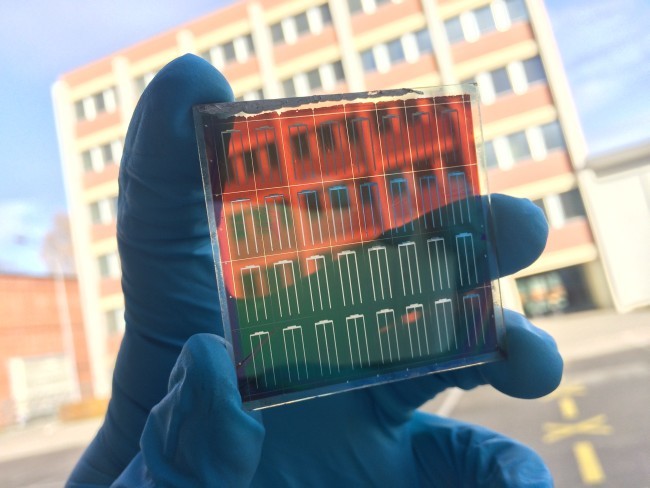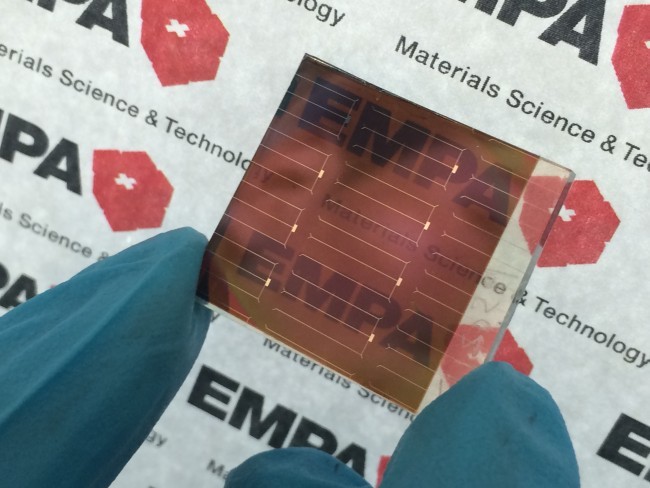Bilayer translucent solar cells with perovskite film

It is dangerous to develop perovskite solar cells in Russia . But in other countries this mineral is being actively studied, which shows promising results. For example, specialists from the Swiss Federal Laboratory for Materials Science and Technology (EMPA) propose to manufacture two-layer photocells : the upper translucent layer is made of perovskite, and the second - based on silicon. Since each material absorbs light of a different spectrum, the overall efficiency is significantly increased.
Already the first samples show an efficiency of 20.5%. Researchers are confident that the maximum efficiency can exceed 30%, while the best single-layer polycrystalline silicon photocell will not produce more than 25%.
The translucent perovskite layer absorbs ultraviolet, blue and yellow spectrum. Infrared and red light passes through it. The efficiency of this layer is 14.2%, the transparency is 72%.

The bottom layer consists of CIGS cells (copper indium gallium dyslenide) - material has been studied in EMPA for many years.
The laboratory has developed an effective technology for the production of solar cells from perovskite in the form of a thin film. Production takes place at a temperature of only 50 ° C, and the cost of the film is very low. They say that this is the first technology in the world for the production of inexpensive and affordable dual-layer solar cells, because Concentrated Photovoltaics (CPV) multilayer solar cells do not meet these characteristics.
The thin film and photovoltaic laboratory at EMPA now manufactures two-layer solar cells based on polycrystalline thin films, but in the future it is possible to use flexible plastic or metal films. In any case, the technology is suitable for mass production of an inexpensive product.
In real life, the cost of a solar battery only half depends on the cost of the module itself with photocells. The second half falls on the infrastructure - inverters, cables, containers for photocells, design and installation. Representatives of EMPA note that these additional costs are reduced when using photocells with higher efficiency, because the physical dimensions of all structures are reduced while maintaining power.
